New Jersey has a storied role in the nation’s history that can be told through the architecture of its municipal buildings. These five city halls — ranging in styles from Neoclassical to Art Deco — made a statement about the importance of our state when they were built.
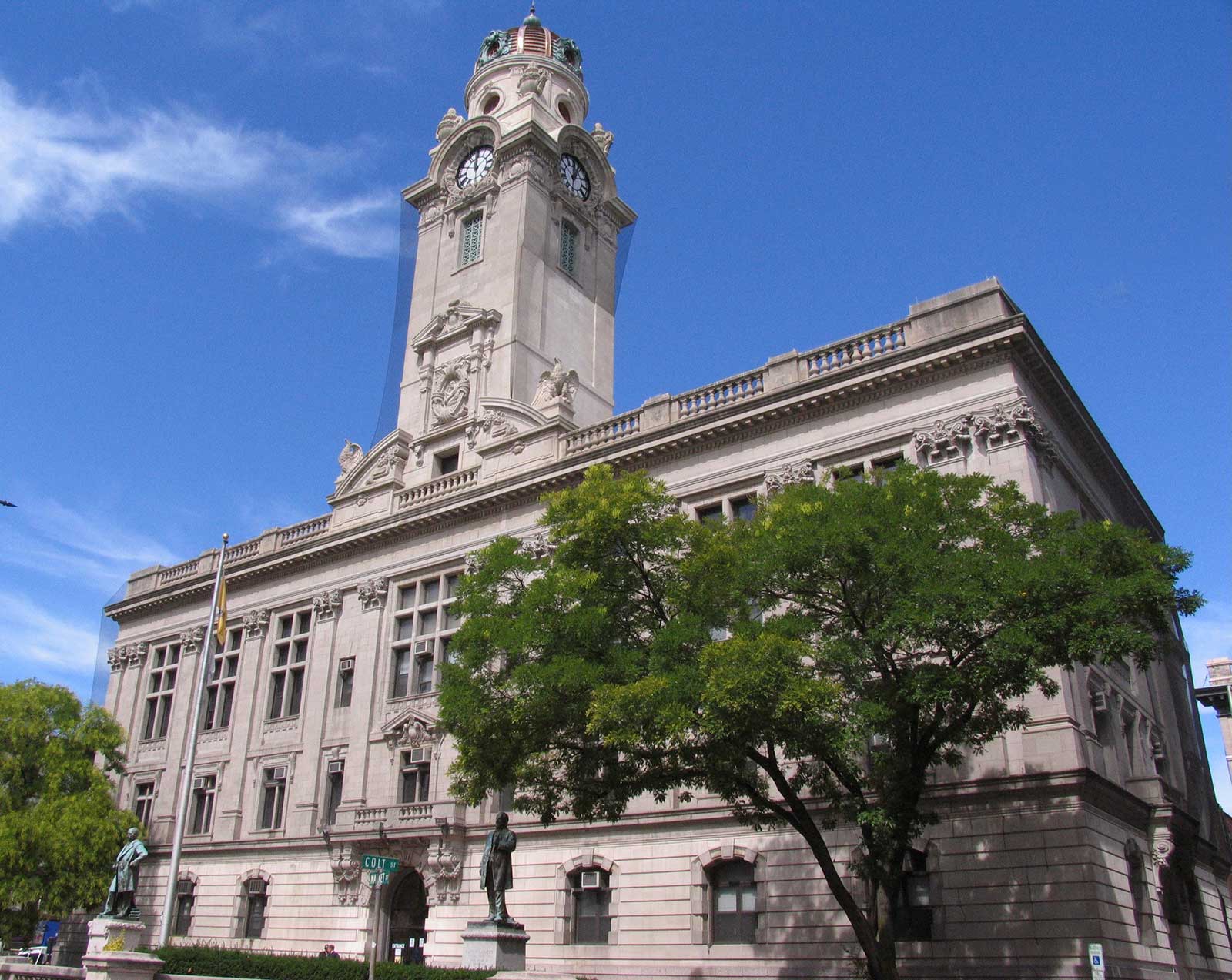
Paterson City Hall
Photographs of the Great Fire of 1902 show the tower of City Hall still standing tall among the cindering ruins of downtowns. It was fortunate to survive as it set the standard of beauty for other municipal buildings in the state, Gianfranco Archimede, director of historic preservation, told Jersey Digs.
The city had considerable wealth from the silk industry and the city center was rebuilt over the next decade when Beaux-Arts was all the rage. With City Hall as the focal point, the historic district is known today as the finest collection of Beaux-Arts commercial buildings in New Jersey.
“The fact that we had the fire at the time we did is significant,” Archimede said. The building was designed by Carrére & Hastings as a miniature version of the city hall in Lyon, France. The homage is fitting as one of the city’s nicknames is Lyon of America as a result of the silk trade. Today, Lyon is the official sister city of Paterson. In 2008, the building had a restoration that preserved the copper dome and clock.
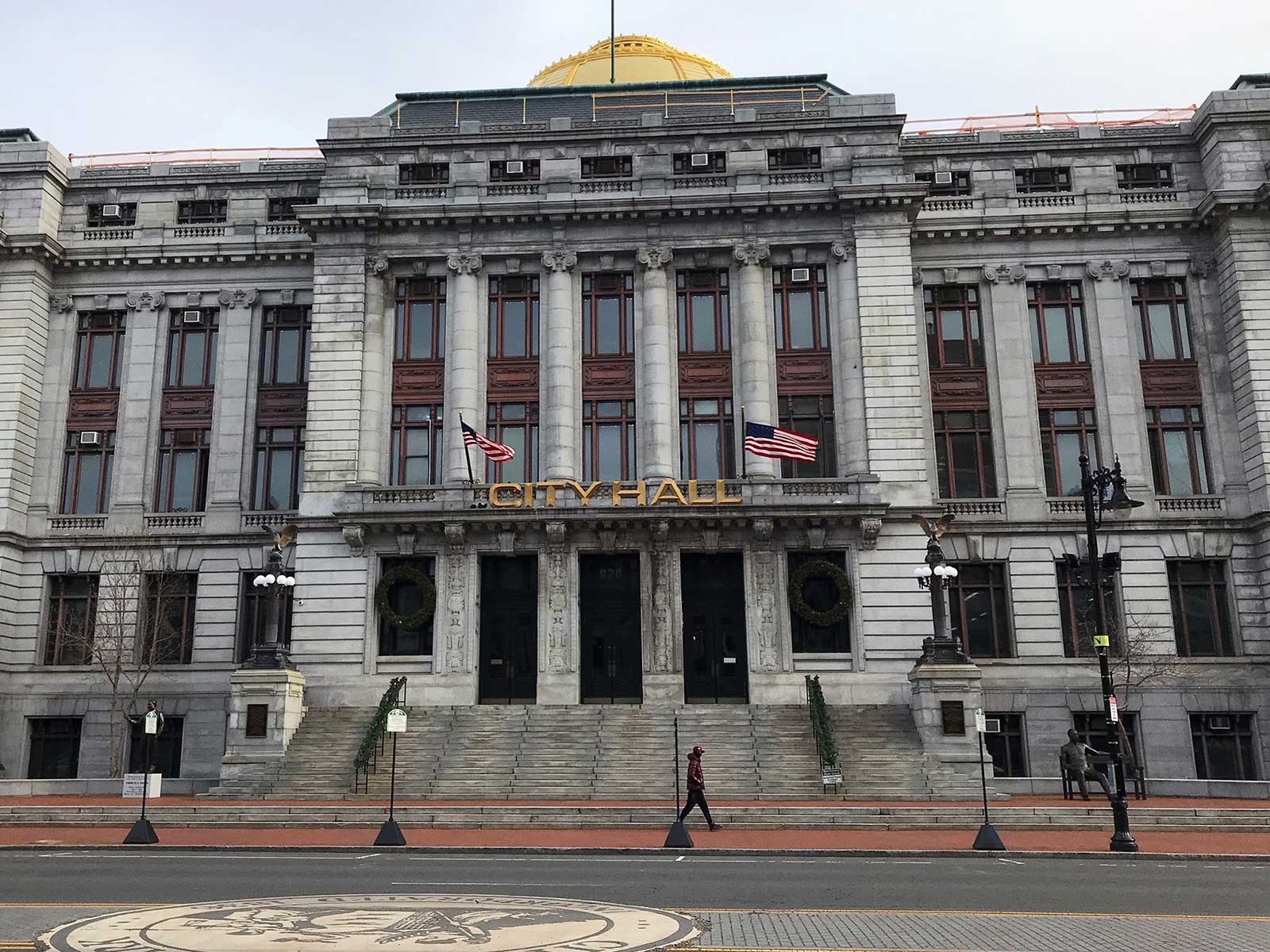
Newark City Hall
An early idea for a new City Hall — to save money on buying land — was to put it in Military Park, but the plan came up against public opposition. Completed in 1906, this building was drawn up by two local architects who beat nearly 60 contestants in a design competition. John and Wilson Ely believed that the state’s largest city deserved a municipal building worthy of that distinction. The father-son team designed a four-story granite and pillared building at 920 Broad Street that is arguably the state’s finest example of Beaux-Arts architecture. “Pretty good showing for a city of 300,000 population, isn’t it?” James E. Howell, chairman of the City Hall commission, remarked on the day it was dedicated, the New York Tribune reported.
The project spared no expense, more than doubling its initial cost projection. The interior is awash in marble and the polished double staircase leads to a second-floor mezzanine. Often called the “people’s palace,” the lavish council chambers are fit for a king. (Although the commission would have argued the city government was saving money by housing the police and fire departments under the same roof as the city council chambers.)
Two of the building’s best-known features were not part of the original design. The iconic gold letters that spell City Hall were added in 1951 and have served as a backdrop for historical events like President Kennedy’s visit days before the Cuban Missile Crisis. The 24-carat gold dome was a gift from developer Harry Grant who was trying to woo the city in an attempt to build a 141-story skyscraper that never came to pass. The New Jersey Historic recently awarded a $750,000 grant to restore the Tiffany stained-glass skylight.
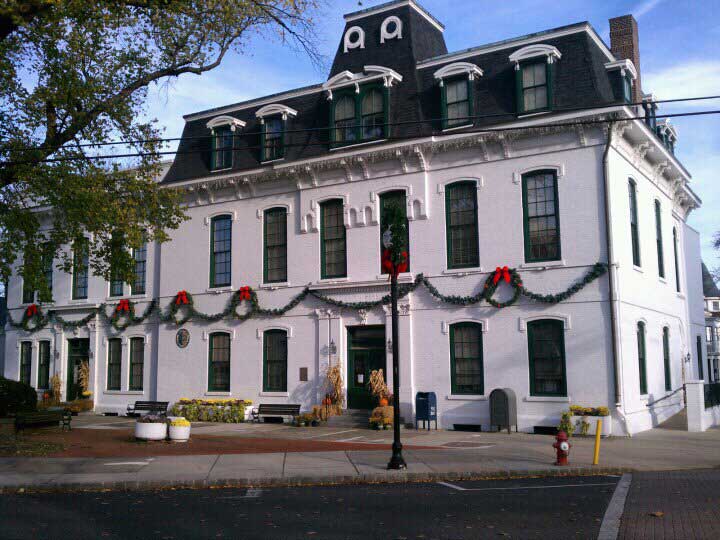
Perth Amboy City Hall
Perth Amboy was New Jersey’s first capital. The City Hall that survives today briefly served as the State Capitol until it moved to Trenton after the Revolutionary War. (The Royal Governor’s Mansion also still exists at 149 Kearny Avenue where William Franklin, Ben Franklin’s son, lived as governor under British rule.)
The original building was swallowed up in alterations that include a Second Empire-style tower and mansard roof. It claims to be the nation’s oldest city hall building but there seems to be a debate on the matter. Still, the building, which is listed on the National Register, tells the story of the state’s colonial history, making it one of the most important municipal buildings in the state.
Last year, Perth Amboy acknowledged its role in the Middle Passage with a marker designating where African slaves were traded. The city would also play an important role in their liberation as well. In 1870, Thomas Mundy Peterson was the first African-American to cast a vote under the newly ratified 15th Amendment. “The City Of Perth Amboy had come full circle, that is, from a port of slavery to a port of freedom,” John Dyke, city historian, said at last year’s Juneteenth celebration.
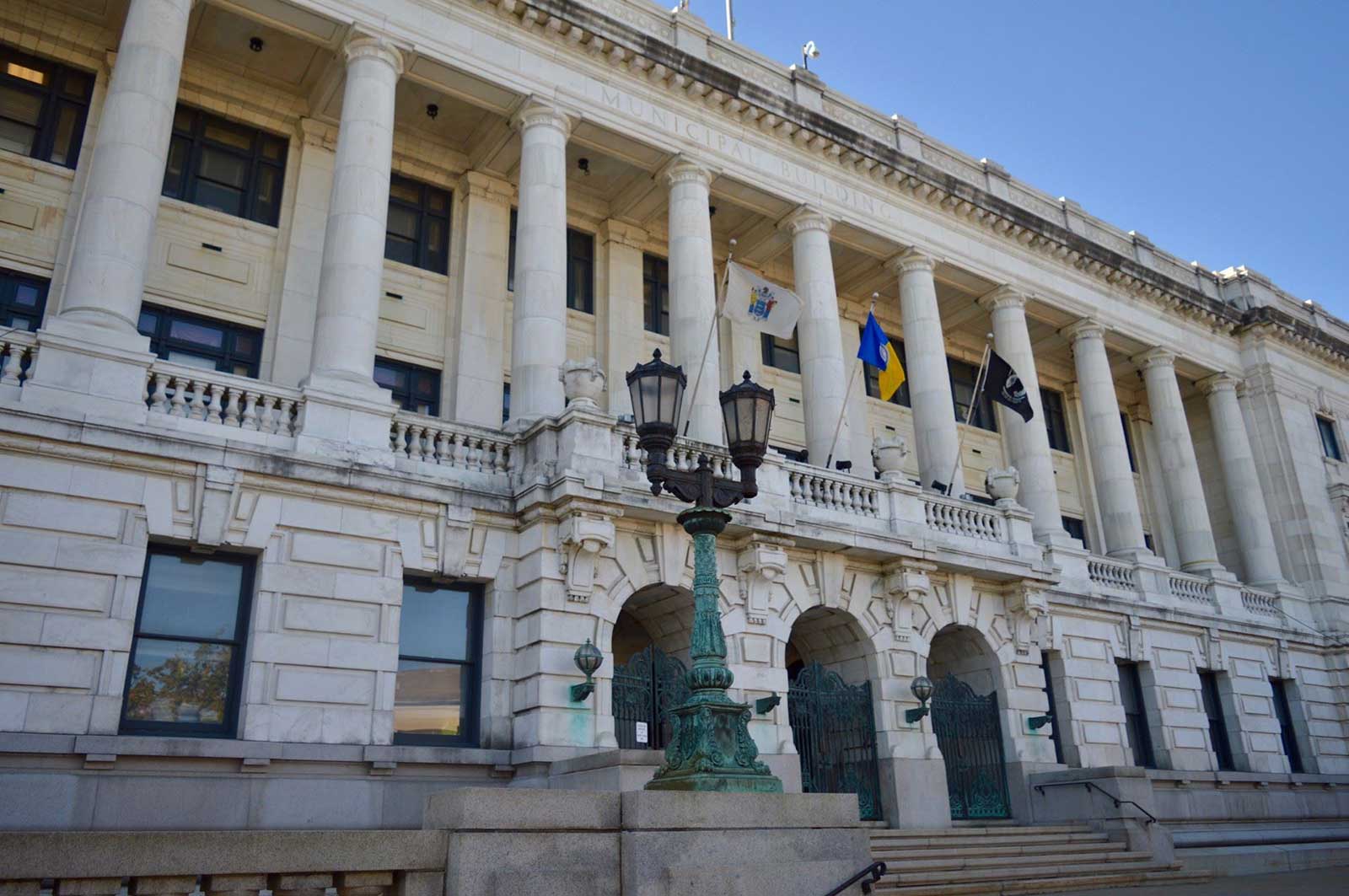
Trenton City Hall
New Jersey’s capital city has a number of palatial state buildings within its borders. It could be assumed that is why the architecture of the city’s municipal building, with its three-sided marble facade, massive columns, and second-floor gallery, was built to stand among them. However, the real reason could be that Trenton residents watch with envy the doors of Newark’s “magnificent City Hall” open in in 1906 and there was a friendly rivalry between the the cities, the Trenton Evening Times reported.
Trenton’s City Hall was designed that same year, 1906, by Philadelphia-based architect Spencer Roberts, who also did the city’s public library. Originally the city allotted $500,000. In the end the project cost $1 million to build, making it, along with Newark City Hall, one of the most expensive municipal buildings ever built in the state. The New Jersey Historic Trust awarded $750,000 last year to restore the building’s exterior.
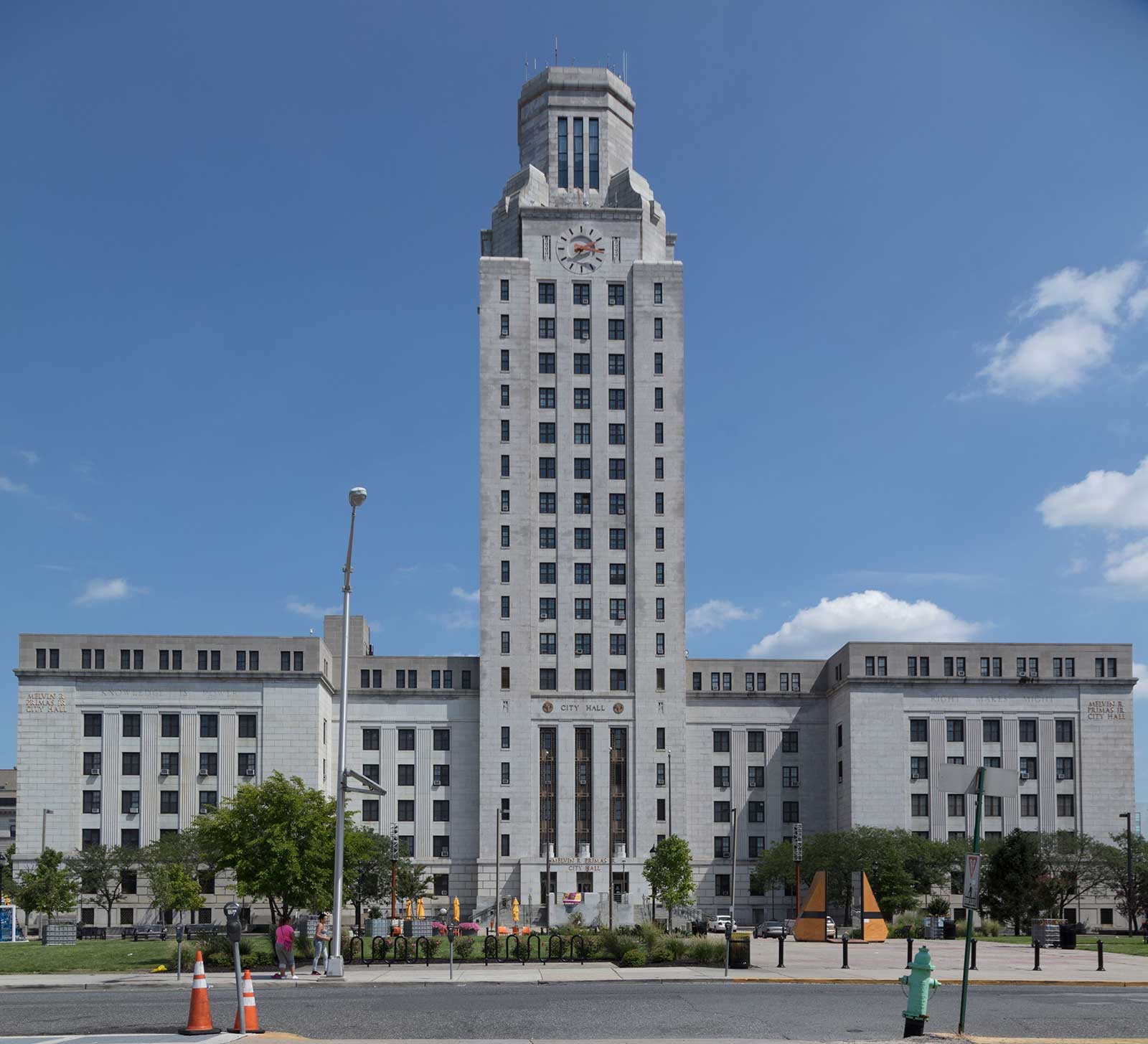
Camden City Hall
The 18-story tower atop Camden City Hall makes it both the tallest building in the city, and the tallest municipal building in the state. It is a statement about the importance of the city in 1932 when it was completed.
Interestingly, Byron Edwards, one of the architects — the other was Alfred Green — was a descendent of one of the original 18th-century Danish settlers of Bridgeton, NJ.
Last year, artist Donna Backues unveiled her interactive mural in the hallway of the building. The image weaves together chapters of the city’s history that include the boom years during World War I when Camden’s shipyard became the world’s biggest.
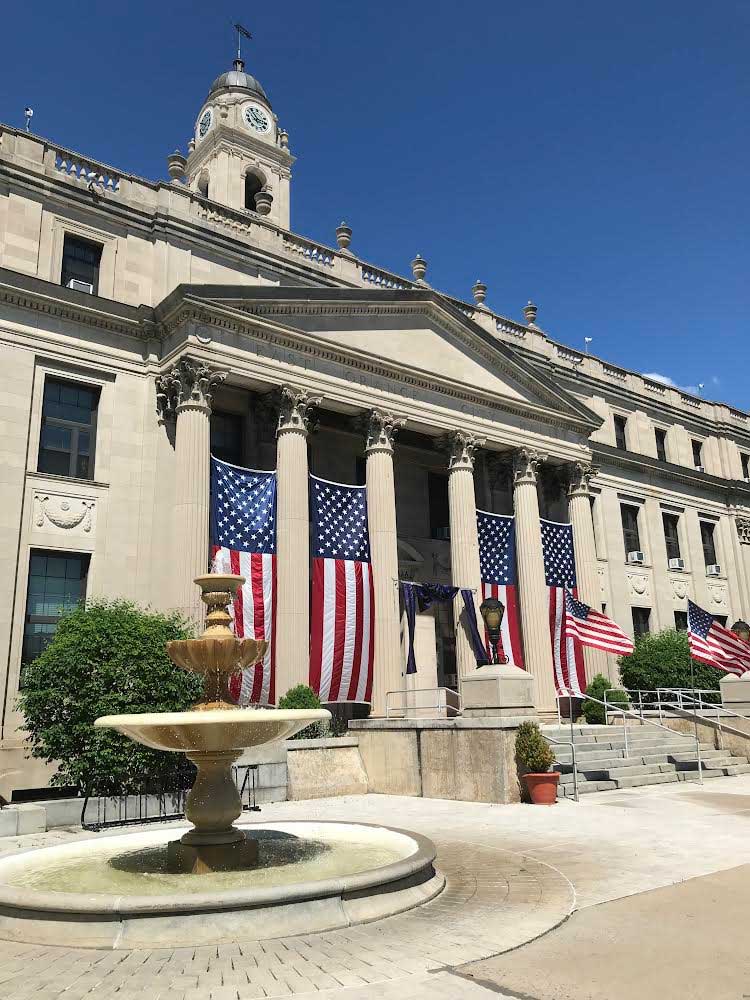
East Orange City Hall
Built in 1929, the East Orange municipal building was designed by the same architects as Newark City Hall. Colonial Revival architecture was the standard style chosen for municipal buildings in this decade (compare nearby town halls in Verona, Maplewood, West Orange). But this must be the finest example in the state.
The limestone facade stands out from its brick counterparts and the meticulously landscaped plaza with Frank Edwin Elwell’s statue of Abraham Lincoln announces the suburbanization of the state and the wealth of this municipality in the early 20th century.
In 2020, Mayor Ted Green announced a plan to redevelop the area around City Hall. The neighborhood contains a number of neoclassical buildings and a Victorian-era train station with midtown-direct service that is listed on the National Register.
—
New Jersey is often snubbed as a culture-less expanse between two major metropolises. But it has played a central role in the nation’s history from the Revolutionary War through today, home to one of the world’s busiest ports. Its importance is enshrined in our state’s architecture.


